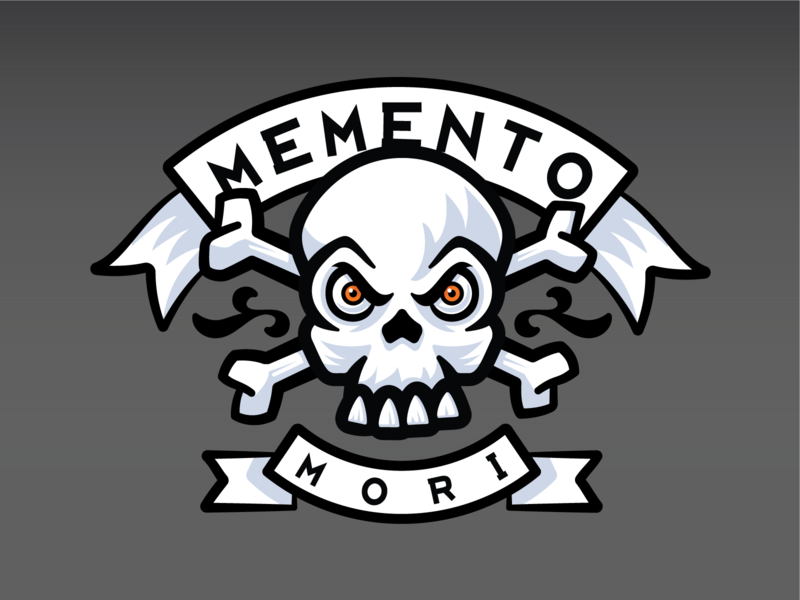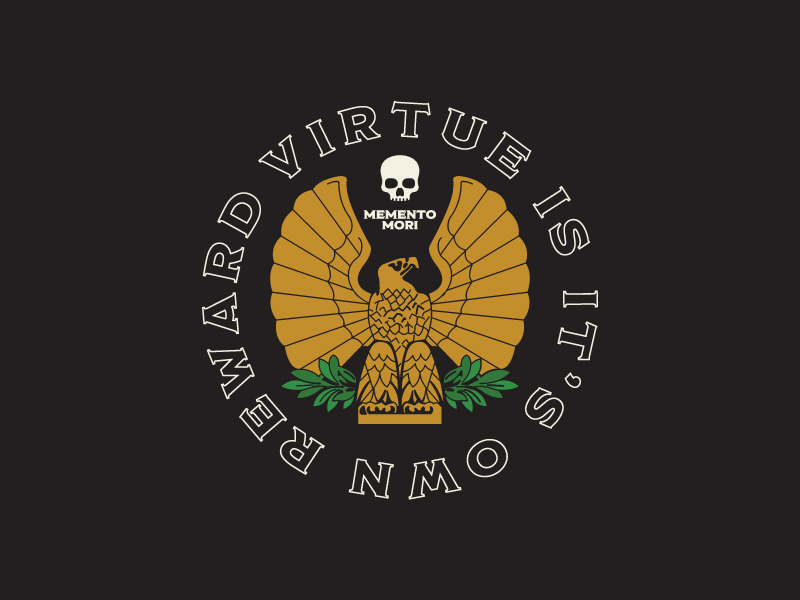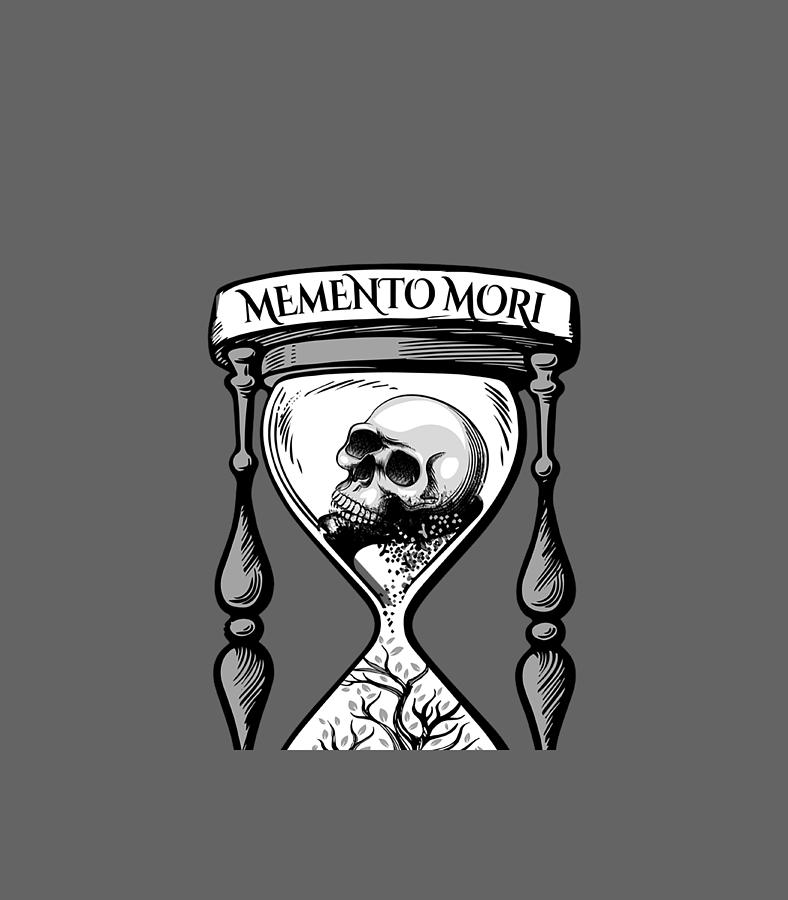
Memento Mori pt. III Memento mori, Mementos, Graphic design
The preferred Memento Mori symbols of the ancient artists - such as skulls and skeletons, coffins, and hourglasses - would be passed down through the ages. Memento Mori and Christianity While the philosophy of Stoicism saw the inevitability of death as a reminder to seek growth and fulfillment in everyday life, in early Christianity Memento Mori took on a more cautionary tone.

Memento mori Premium Vector Free Vector Freepik vector freewallpaper freeskull freeglass
Memento Mori. Memento Mori are simply symbols of death, like skeletons, skulls, grim reapers, and decomposing human remains, used to remind the viewer to remember and prepare for their own impending death. Memento Mori were popular in the Middle Ages in Europe and served as a warning to visitors to repent from sin and maintain their religious.

Memento Mori on Behance
Memento mori ( Latin for 'remember that you [have to] die') is an artistic or symbolic trope acting as a reminder of the inevitability of death. The concept has its roots in the philosophers of classical antiquity and Christianity, and appeared in funerary art and architecture from the medieval period onwards.

Memento Mori Logo Ring Stoic Store UK
The Squires Headstone. The Squires headstone possesses many symbols. Note the archway at the top of the headstone. The keystone is missing, sometimes symbolizing a life cut short or unfinished. Lilies partially surround the name. The symbol of lilies is usually associated with purity or beauty. The pathway of cobbles leads to the pearly gates.

Memento Mori by Scott Lewis on Dribbble
Mar 07 • Art Data • Words by Sukayna Powell An Enduring Symbol: The continued appeal of the memento mori Since the 15th century, the memento mori has become one of the most poignant motifs used to explore, express and challenge ideas of mortality. As we move beyond centring human life in all discussions, this genre has similarly evolved to encompass beings greater than our individual.

Memento mori hires stock photography and images Alamy
Memento mori is a Latin phrase that means "remember that you will die". It is meant to remind you of your own mortality, and of the brevity and fragility of human life. 'Memento mori' has been mentioned as an important principle by many people throughout history, and implementing it in your own life can benefit you in various ways. As.

memento mori symbol Google Search Memento mori, Gift accessories, Gold coins
But for that reason the discipline of death-awareness is perhaps even more crucial in our time, where life expectancy may be twice as long but the mortality rate holds steady at universal. Consider just two reasons memento mori still matters today. 1. Death Puts Our Other Problems in Perspective. When the reality of death fades to the.

Memento Mori pt. III by Peter Voth on Dribbble
Memento mori is a philosophical reminder of the inevitable nature of death. In Latin, it translates to "remember that you will die". The term arose from the minds of the great thinkers of classical antiquity, and memento mori symbols have been found in architecture and funeral art as far back as the medieval period.

Daily Stoic The Memento Mori medallion Daily Stoic Store
Today, Memento Mori symbols have become a central component of visual culture and can range from odd and gruesome to comical, or seductive. What Is Memento Mori? The Latin phrase 'Memento Mori' means 'Remember, you must die. In art history, Memento Mori often refers to images or implications of death in art. Founded on the tenets of.

Pin on Memento mori
memento mori, in art and spirituality, a symbolic trope or meditative practice that serves as a reminder of mortality and the transitory nature of earthly pleasures. Memento mori is a Latin phrase meaning "remember you must die.". The notion of "remembering death" appears throughout European history, and other cultures have traditions.

Memento Mori by Ben Howes on Dribbble
The hidden meaning of the phrase "memento mori". "memento mori", which is often mistranslated as "remember that you will die", actually also has another meaning when analyzed in a more correct translation: "remember that you must die". The difference is subtle but important as it is not only a reminder of our mortality but also.

Memento Mori Memento Vivere Skull Design Stoic Memento Mori Digital Art by Omarn Shiza Fine
Still Life with Poppy, Insects, and Reptiles (ca. 1670) by Otto Marseus van Schrieck The Metropolitan Museum of Art. This bright red poppy stands out in a scene teeming with snakes, lizards, and other shady creatures. Flowers are a classic symbol of memento mori, reminding us that they eventually wilt and die. Just as we do.

120 Top Memento Mori Tattoo Ideas To Choose From
Memento mori symbols started to appear in European portrait paintings as early as the 1400s. They became a prominent theme by the 17th century. 5 Symbols representing death, dying, and the passage of time were used to remind the good Christian that life is fleeting, and so they should focus on attaining eternal rewards rather than the finite pleasures of life.

Woodcut, Linocut, Momento Mori Tattoo, Skeleton Art, Art Deco Diamond, Diamond Brooch, Opus
One famous memento mori appears on an exterior panel of Jan Gossaert 's Carondelet Diptych (1517) at the Louvre. The artist painted a skull with a dislocated jaw—an allusion to the dissolution of the personality after death. The somber message below reads: "He who thinks always of death can easily scorn all things.".

120 Top Memento Mori Tattoo Ideas To Choose From
Memento Mori Symbolism. Artists have long been fascinated by this stoic philosophy, using the somber teachings as a springboard for their art. In fact, skull art, which certainly has its origins in memento mori, continues to be a popular aesthetic niche.Skulls, skeletons, and skulls with wings have all been employed as powerful reminders that we will all leave this earth at some point.

Memento Mori V by billelis on Dribbble
Memento mori ( Latin for 'remember that you [have to] die' [2]) is an artistic or symbolic trope acting as a reminder of the inevitability of death. [2] The concept has its roots in the philosophers of classical antiquity and Christianity, and appeared in funerary art and architecture from the medieval period onwards.